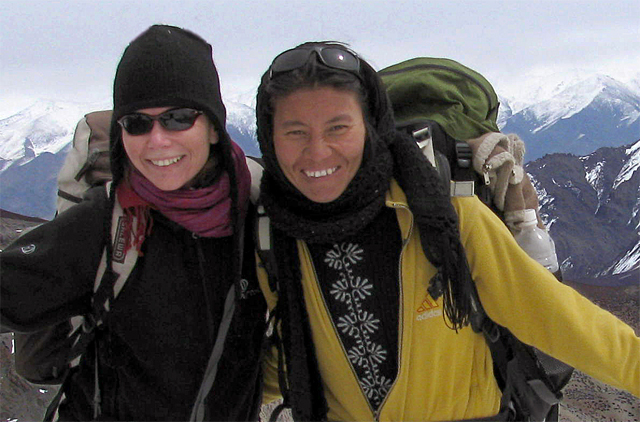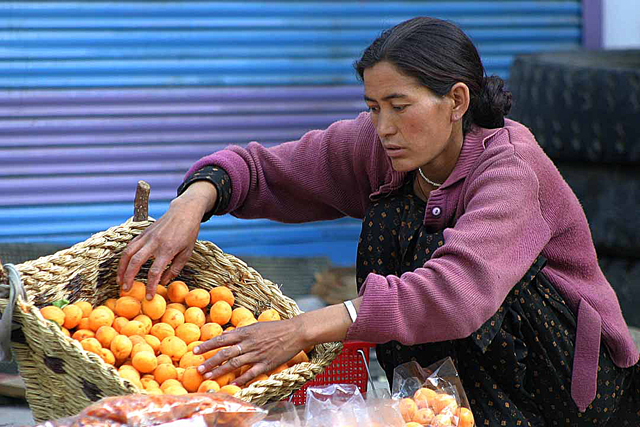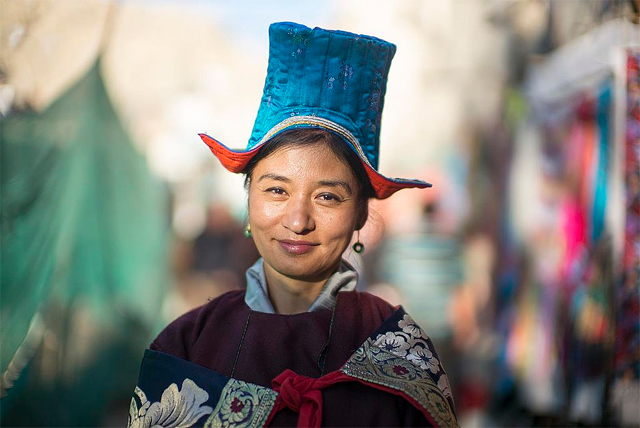Anzara Anjum Khan wrote a piece for an Indian daily newspaper last week in which she emphasized that the situation for women in Ladakh is worse than she had thought. Ladakhi women are widely discriminated against, she found: they are often not given a share of their father’s or their husband’s properties. Furthermore, they are frequently left with nothing if their husbands, even after many years of marriage, decide to divorce them, leaving them with no resources with which to raise their children.

Ms. Khan opened her article by interviewing Thinlas Chorol, the well-known founder of a trekking guides company in Ladakh, who expressed strong reservations about the place of women in Ladakhi society. Ms. Chorol, who may have read articles such as one in this website two years ago about her accomplishments and the tradition of gender equality fostered by the Ladakhi, was dismissive of such analyses. “Is it justified to say that women in Ladakh are enjoying liberty and equality only because we are not burnt for dowry or killed in the [womb],” she complained to the author.
The journalist piled on the facts to build her case. The Ladakh Autonomous Hill Development Council, the governing body in the region, has 30 seats, of which only two are held by women. Rinchen Lamo, one of the women councilors, pointed out that the LAHDC has succeeded in addressing numerous important issues but the concerns of women are not among them. Even basic gender amenities such as separate public toilets for women, or separate cells for women in prisons, are not available in Ladakh. In her position on the Council, she is trying to advance the cause of women but is still waiting for results from male authorities.

Ms. Lamo described her efforts on behalf of women. She has encouraged them to get involved in politics, to become part of the decision-making process, and to help change the situation. She also is working within the LAHDC to improve the security of Ladakhi women. “I need women of different walks to come on to one platform and work together for the empowerment of women,” she said.
Deachen Angmo, a 35-year old councilor in a local village council, complained that women work as hard, or harder, than men do. They take care of their families 24 hours of the day, do all the housework, take charge of community activities, serve on village governing councils as she does, and participate in the discussions—but they are frequently not allowed to make the decisions. Her words reflected her bitterness: “The work load is always on women whether it is in the family or in the village,” she said vehemently.

Another woman, Tsering Dolma, 62, from the village of Choglamsar, said basically the same things. The women organize the meetings of all the adults in the village and do all the work of the village council, but they are not part of the decision-making. She wondered why.
The journalist interviewed both the president and the vice-president of the Women’s Alliance of Ladakh, located in the town of Leh, the capital of the district. Murup Dolma, the president, said that Ladakhi women have tried to compete in elections but so far they have been unsuccessful. The reason is that the voters are reluctant to elect women to decision-making and policy-making positions. She feels a complete lack of support about that issue in the community.

Yangchan Dolma, the vice-president of the organization, was even more outspoken about conditions for women in Leh. “Things are changing in this small town—not for the better, but for the worse,” she said. She went on to say that the organization focuses on skill-building for village women in workshops that try to foster useful productive interactions and that seek to develop entrepreneurship skills.
Ms. Khan, the journalist, also interviewed a man, Oztsal Wangdus, the president of the local bar association, who blamed the situation, at least in part, on the women themselves. He cited the fact that three different women’s groups celebrated International Women’s Day with three different events in three different locations. “These groups should come together on one platform; after all, they are all working for the same cause,” he said. Furthermore, he blamed the women for not aggressively fighting to be elected.
But the article concluded with an observation made by Thinlas Chorol that Ladakhi women “need to think what they are going to leave behind for the coming generations.”